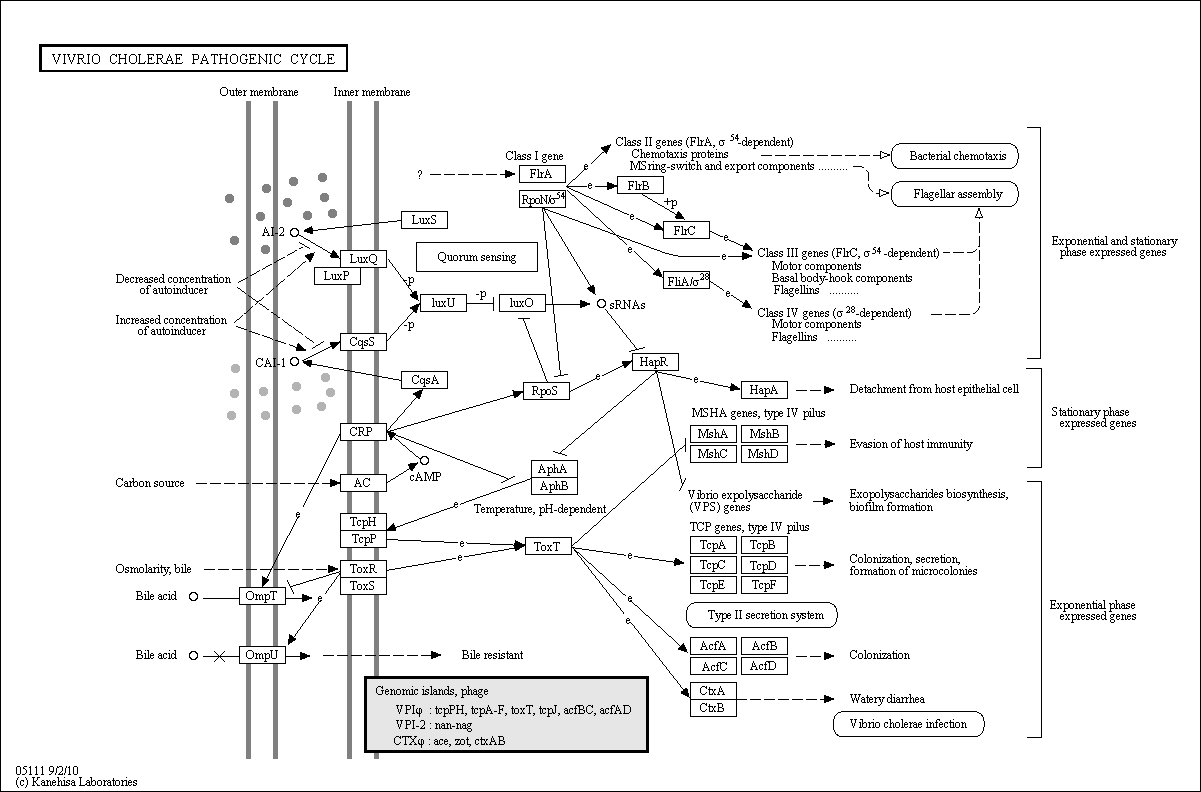Vibrio Cholerae Pathogenic Cycle
Description: The dual life style of Vibrio cholerae, in the aquatic environment or in the human host, is supported by appropriate gene expression of various factors. During exponential phase, quorum sensing systems mediate degradation of the virulence repressor HapR, which, together with the control of ToxR regulon, in turn leads to induction of virulence factors such as toxin coregulated pilus (TCP) and cholera toxin (CTX), essential for colonization of the host and enterotoxicity, respectively. Contrastively, during conditions of stationary phase, HapR is upregulated and induces hemagglutinin/protease (HapA) production, which will be involved in detachment of V. cholerae from epithelial cells of the host intestine. On the other hand, flagellar and chemotaxis gene transcription is organized into a hierarchy of four classes of genes controlled by some sigma factors. Source: KEGG (ko05111)

Related BMRB Molecules
For complete information about pathway, see KEGG [map05111]
